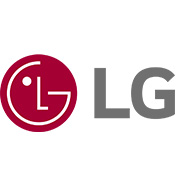-
As the mobility industry shifts towards software-defined vehicles (SDVs), the importance of automotive displays continues to grow. Advanced display technology is already enhancing in-car infotainment systems and user experiences by presenting drivers with a wealth of vehicle and road-related information, while offering passengers an array of entertaining content.
-
The trend of incorporating larger and more numerous displays within vehicles, often referred to as ‘screenification,’ is elevating the convenience, safety and enjoyment of vehicle occupants, while also influencing vehicle cabin design. OLED panels, known for their superior image quality and unmatched flexibility (both literally and in terms of design), are increasingly being adopted in the premium auto segment.
-
Market research firm Omdia projects that by 2030, one out of every two information display units used in premium vehicles will be an OLED panel. Several global automakers are now equipping their high-end models with large, high-resolution displays to meet customers’ evolving expectations and preferences. With their stunning colors, clarity and contrast, OLED panels are raising the bar for automotive displays and are expected to drive the market’s continued expansion.
-
OLED technology makes it possible to create large, curved and flexible screens for use in digital cockpits. In response to the auto industry’s increasing interest in premium displays, the R&D laboratory at LG’s Vehicle component Solutions (VS) Company has recently developed an algorithm for its in-vehicle OLED displays that compensates for any visual distortion related to viewing angle. This advanced technology, first showcased at Display Week 2024, ensures that LG’s automotive OLED screens deliver consistent brightness and distortion-free colors from practically any angle. As a result, drivers can now see images and text more clearly across all parts of the display, enhancing safety by reducing the time needed to check on-screen information.
-
LG’s new technology overcomes the viewing-angle limitations typically associated with large, curved OLED displays. Currently, LG is the only automotive display supplier to have developed an algorithm that corrects these particular issues and is now in the process of commercializing this innovation.
-
Research into flexible OLED automotive displays has been a major focus for LG VS Company’s R&D laboratory over the past year. Kim Kyung-lack, vice president of Display Development at LG VS Company, noted that due to extensive and ongoing efforts, LG is able to offer a wide range of automotive displays leveraging next-generation technology to deliver outstanding performance. Since 2022, LG has been developing advanced in-vehicle displays and now boasts an impressive portfolio of solutions, including screens with rollable, flexible and foldable form factors. The company’s diverse offerings provide automakers with more choices when designing vehicle interiors and offer vehicle users a richer, more varied in-car experience.
-
Beyond automotive displays and components such as EV motors and smart lamps, LG VS Company offers cutting-edge in-vehicle software platforms and solutions. This software integrates seamlessly with the company’s display products to form a complete in-car experience solution, adding significant value for automakers seeking to enhance the functionality of their existing infotainment systems.
-
Through its innovative solutions for vehicles, LG is accelerating the arrival of the SDV era and playing a leading role in redefining the future of mobility.
-
To learn more about LG’s advanced automotive display products, visit www.LG.com/global/mobility.
-
# # #



![Part 35. [Mobility Inside]<br>LG Revolutionizes Automotive Displays with Flexible, Distortion-Free OLED Technology</br>1](/global/mobility/images/more-stories/240705/vs-hq-more-stories-hero-d.png)
![Part 35. [Mobility Inside]<br>LG Revolutionizes Automotive Displays with Flexible, Distortion-Free OLED Technology</br>2](/global/mobility/images/more-stories/240705/vs-hq-more-stories-hero-m.png)